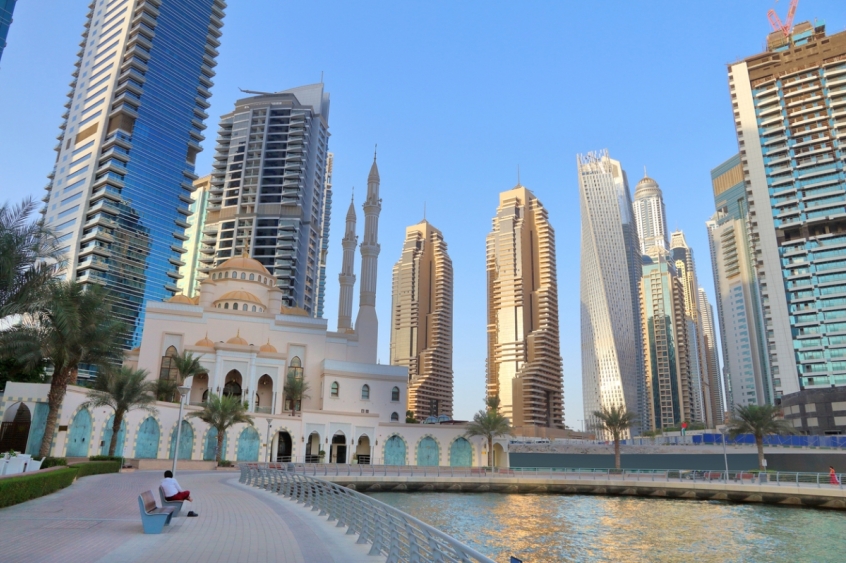
(CP) The discovery of an ancient Christian monastery on an island in the United Arab Emirates purportedly might shine a light on the faith's early history before the rise of Islam in the region.
As The Associated Press reports, archeologists found the monastery on Siniyah Island, a dune in the UAE city of Umm al-Quwain that lies about 30 miles northeast of Dubai on the Persian Gulf. It is the second monastery discovered in the Emirates that could be 1,400 years old.
Last Thursday, UAE Culture and Youth Minister Noura bint Mohammed al-Kaabi, Sheikh Majid bin Saud Al Mualla and the Chairman of the Umm al-Quwain's Tourism and Archaeology Department Sheikh Majid bin Saud Al Mualla visited the site.
UAE's Culture Ministry is sponsoring the ongoing dig, which is taking place near the vicinity of buildings belonging to a village that predates Islam.
The carbon dating sample of the recently discovered monastery's foundation dates between 534 and 656 A.D. The Islamic prophet Muhammad was born in 570 A.D. and is believed to have died in 632 A.D. after conquering Mecca in what is now known as Saudi Arabia.
The monastery's floor plan suggests Christians worshipped in a single-aisle church. A second building near the structure containing four rooms may have housed a church leader. Other rooms inside the monastery hold a baptismal and an oven for baking communion bread or wafers.
Another section of the building, known as a nave, likely held an altar and a place for communion wine.
In the early 1990s, archaeologists discovered the first Christian monastery in the UAE, on Sir Bani Yas Island. The structure dates back to the same time period as the recently discovered monastery in Umm al-Quwain.
Timothy Power, an associate professor of archaeology at the United Arab Emirates University, who helped investigate the Umm al-Quwain monastery, described the present UAE as a "melting pot of nations."
"The fact that something similar was happening here 1,000 years ago is really remarkable and this is a story that deserves to be told," Power told AP.
Today, just over 12% of the UAE population is Christian.
According to a 2021 U.S. Department of State report, UAE's constitution declares that Islam is the country's official religion but allows freedom of worship that does not conflict with public policy. The law also prohibits religious discrimination and criminalizes acts of "religious hatred."
"According to non-Muslim religious community representatives, there was a high degree of societal tolerance for minority religious beliefs and traditions, particularly for those associated with houses of worship officially recognized by the federal or local emirate governments, although conversion from Islam was strongly discouraged," the State Department's annual International Religious Freedom report states.
In 2019, UAE announced plans to open the Abrahamic Family House on Saadiyat Island near Abu Dhabi. The complex will house a church, synagogue and mosque to promote religious harmony and bridge adherents of the three Abrahamic religions.
The archaeological examination of other historical Christian sites throughout the Middle East has provided insight into several military conquests depicted in the Bible.
According to a study published earlier this month in the Proceedings of the National Academy of Sciences, a new dating technique allowed researchers to link archaeological contexts with Old Testament accounts of military campaigns against the kingdoms of Israel and Judah.
The study, conducted by Hebrew University and Tel Aviv University, purportedly dated 21 destruction layers at 17 archaeological sites in Israel.
Twenty researchers from different countries and disciplines used archaeomagnetic dating to gather readings from ancient geomagnetic fields preserved through time to track changes.
Specific archaeological findings, such as pottery, bricks and roof tiles can record the Earth's temperatures when heated. The findings' magnetic minerals remagnetize when subjected to high temperatures, with scientists using this to connect them with the Earth's geomagnetic field at the time this occurred.
The researchers claim their findings indicate that King Hazael of Aram-Damascus' army was responsible for the destruction of the cities of Tel Rehov, Tel Zayit and Horvat Tevet, in addition to Gath, a Philistine state. However, the team also stated that their research shows that Hazael did not conquer Tel Beth-Shean.
Other geomagnetic findings appear to confirm theories that Edom took advantage of Jerusalem's fall and razed parts of Southern Judah to the ground.
One of the project's supervising professors, Erez Ben Yosef, highlighted the team's discoveries about the Kingdom of Judah and its end. According to the professor, the kingdom's last days are still hotly debated.
"Some researchers, relying on archaeological evidence, argue that Judah was not completely destroyed by the Babylonians," Yosef said.
"While Jerusalem and frontier cities in the Judean foothills ceased to exist, other towns in the Negev, the southern Judean Mountains and the southern Judean foothills remained almost unaffected."
The magnetic results in the study appear to support the idea that the Babylonians were not solely responsible for Judah's demise.
"Several decades after they had destroyed Jerusalem and the First Temple, sites in the Negev, which had survived the Babylonian campaign, were destroyed — probably by the Edomites who took advantage of the fall of Jerusalem," Yosef said.
Yoav Vaknin of Tel Aviv University's Institute of Archaeology and one of the study's lead authors said in an Oct. 25 interview with The Times of Israel that the study is the first to have a "large enough database" to conduct reliable archaeomagnetic dating.













